Herculaneum, in the shadow of Pompei and Vesuvius.
It wasn't only Pompei that was destroyed and buried under the eruption of Vesuvius in 79AD, other towns like Oplontis, Stabiae, Nuceria and the town i would like to mention, Herculaneum often disregarded.
Herculaneum, in modern day Erculano was discovered in 1709, the ancient town fell under 19 meters of ash and lava and was hit by a pyroclastic stream, the cloud of ash and lava that hangs over an erupting volcano and then descends on land, unlike Pompei which was hit by a rain of pummice.
Herculaneum was founded in the 6th century BC, inhabited by adversaries of Rome it was later conquered in 89BC and made a municipium, an annexed town.
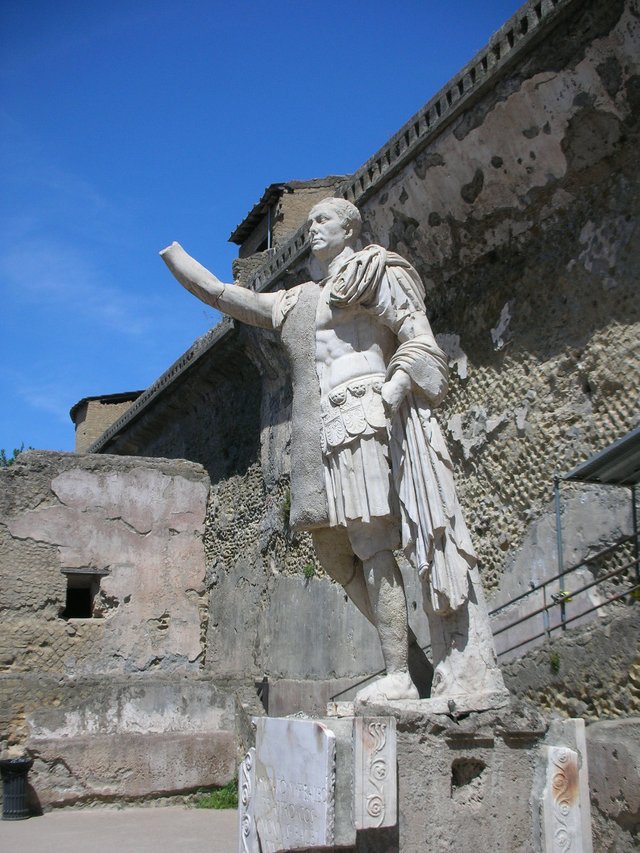
Statue of Nonius Balbus, a benefactor of Herculaneum, praetor and proconsul of the provinces of Crete and Cyrene under the reign of Augustus. Notice the square patterns on the houses, they are all over the sites in Pompei and Herculaneum, the original stuca has come off, leaving the workable square patterns.
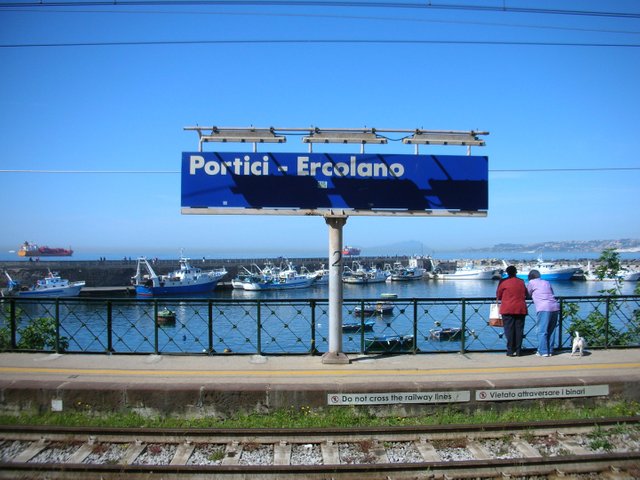
Modernday Ercolano railstation with a view on the bay of Napels.
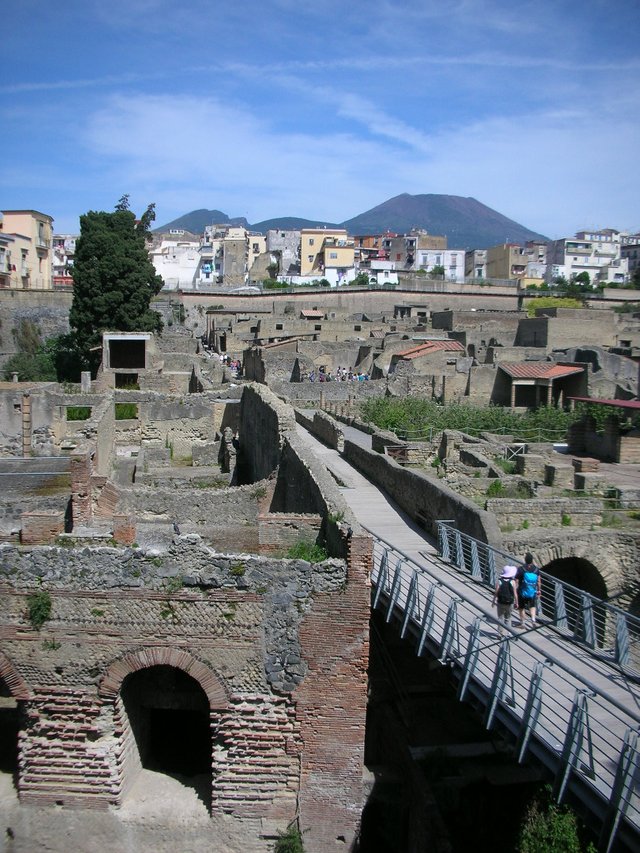
Only 7 km's from Vesuvius, the town was situated by the sea,
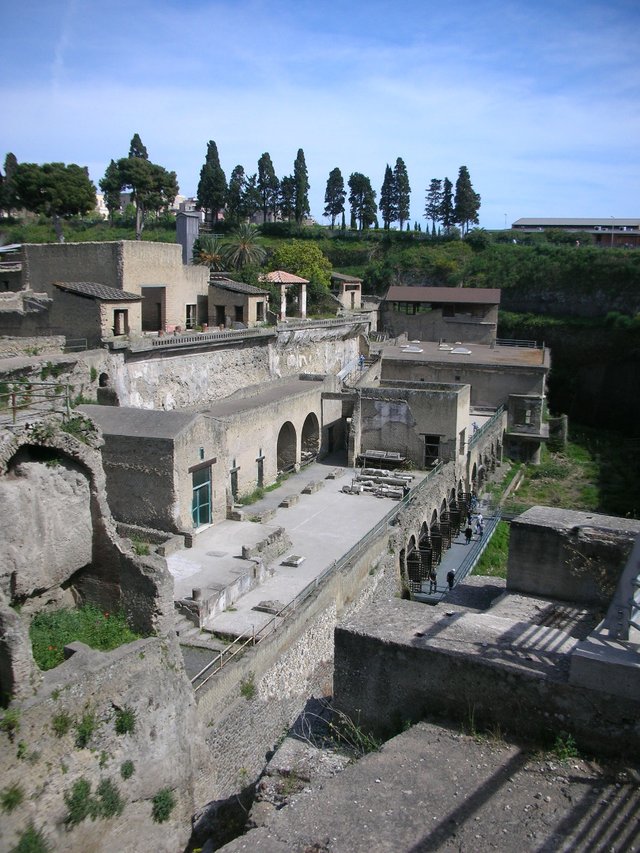
the arches, were silostructures used for unloading and storing products and boathouses, located directly near the sea. Clearly visible on this picture is the current groundlevel of habitation and the height of debri that fell down after the eruption.
The arches where used as as safeplace during the pyroclastic rain and basicly position the lost harbour,
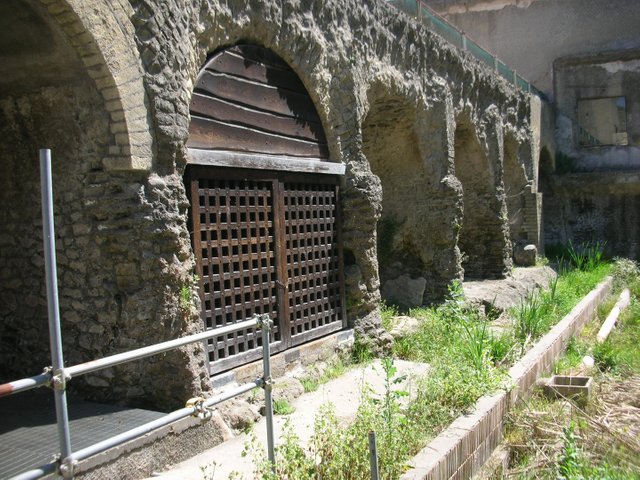
it did not help, people suffocated and died of the heath, getting burried under the eruption.
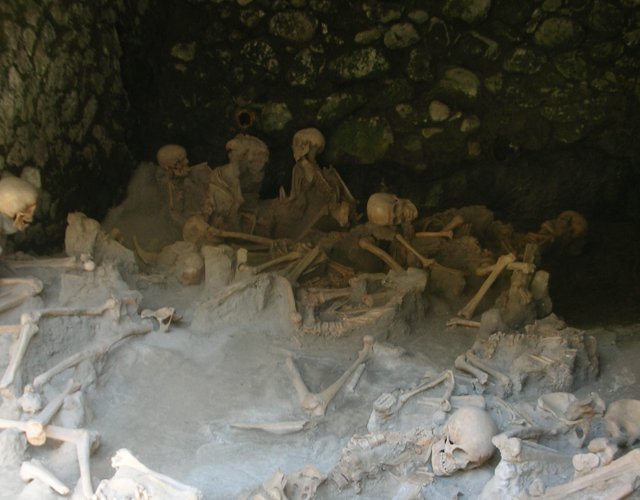
Inside one of the siloarches, boathouses.
A short tour,
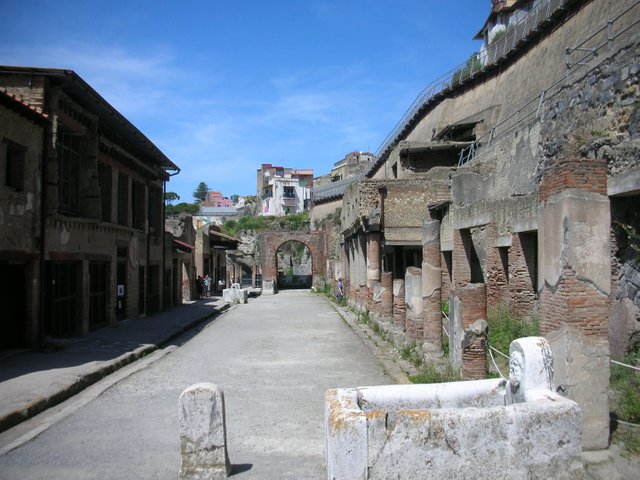
Further inside the town, which was home to 4000 people and which was layed-out on a checkers pattern, 3 streets probably crossing 5 streets, the Roman usual, a theater, citywalls and citygate, a forum, a bassilica, small tempels, shrines with luxuary villas outside the walls.
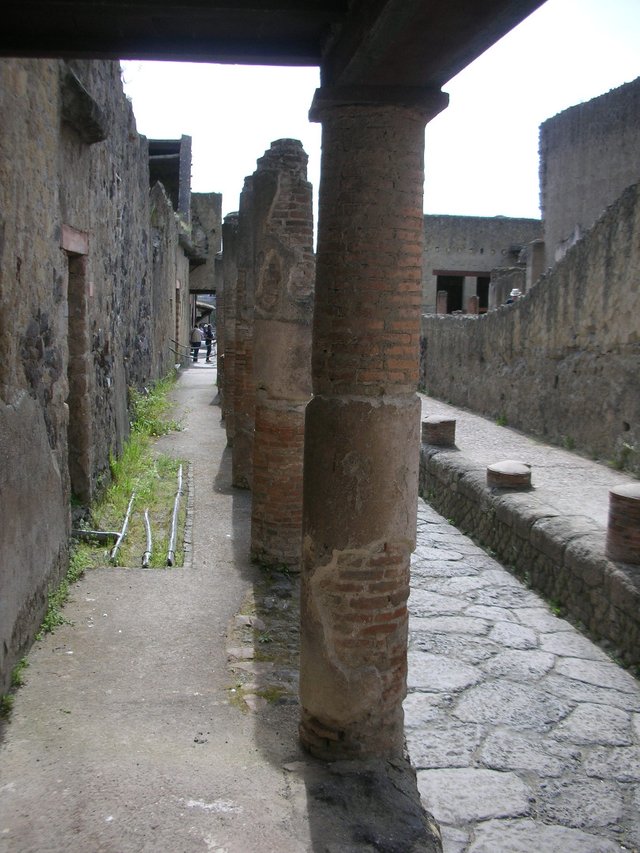
The streets with the high curbstones, which was done because of the seasonal rains which drained the streets.
Notice the lead pipes used in Roman times.
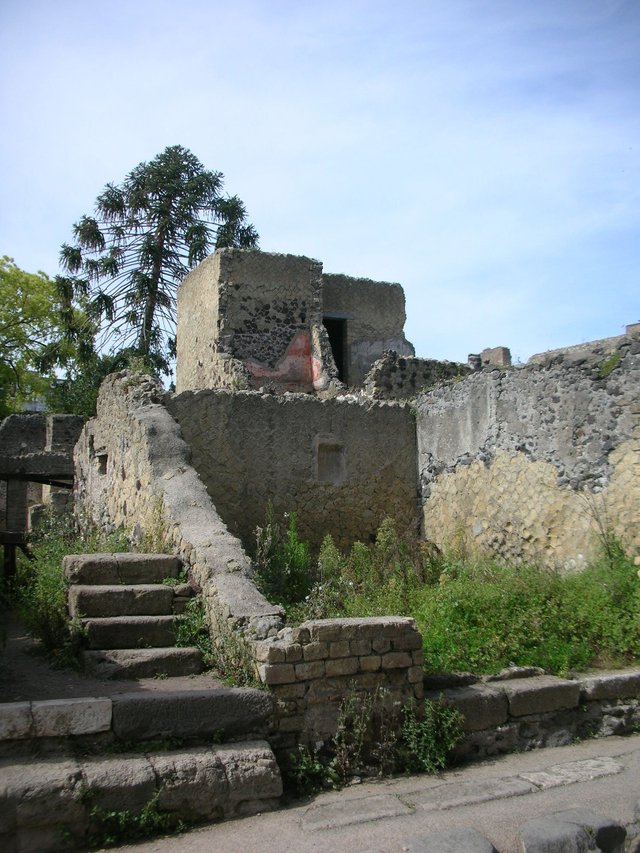
Houses along the streets,
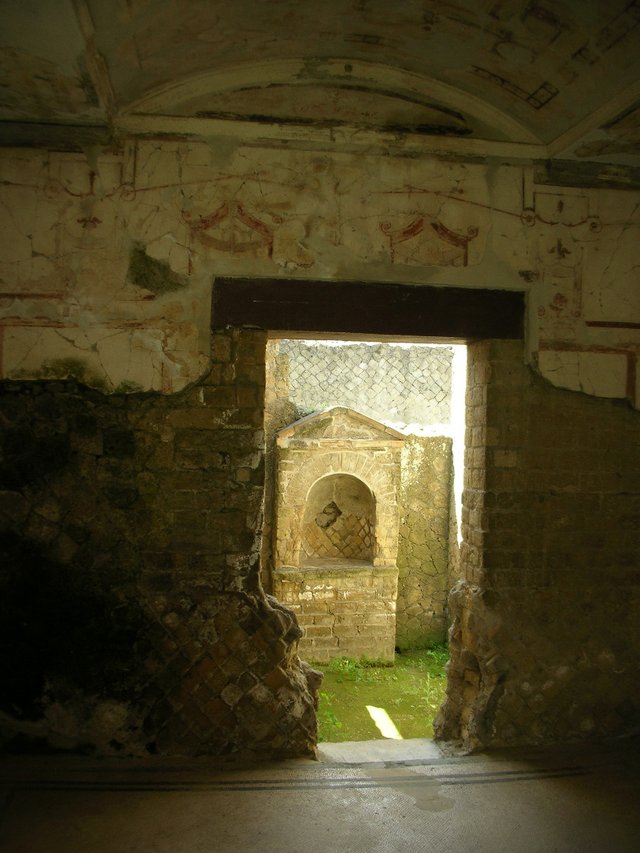
looking inside a house, it's small garden and housealtar.
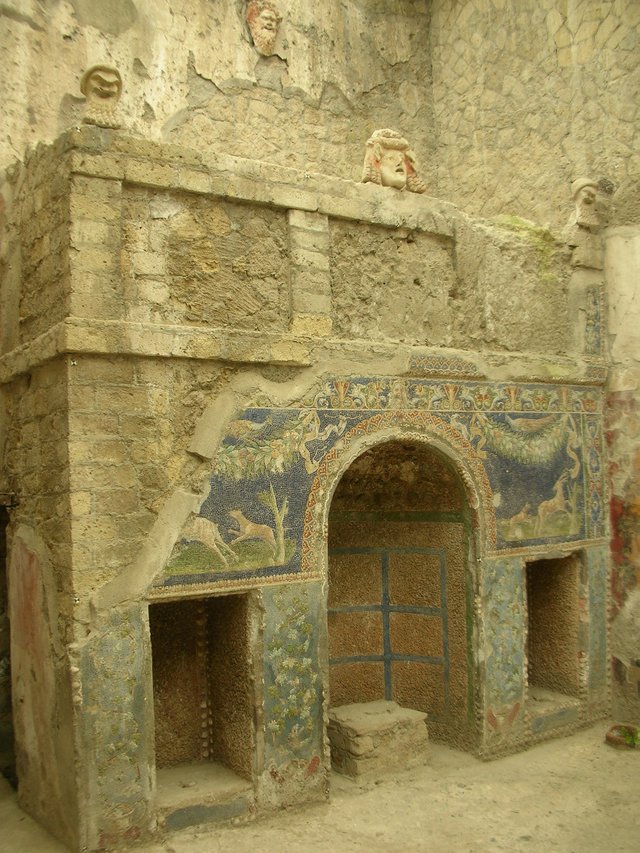
Another housealtar, where people practised their religeon to the gods they held in high esteem, choosing from the pantheon, a set of gods.
Inside the hallway of the Collegium of the Augustales, home to priests devoted to Augustus emperor.
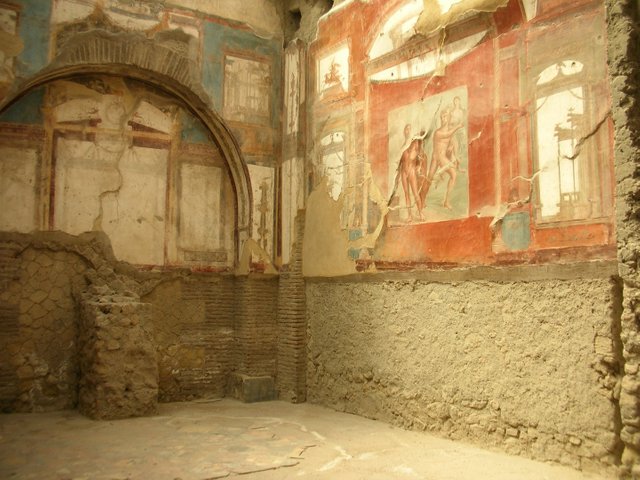
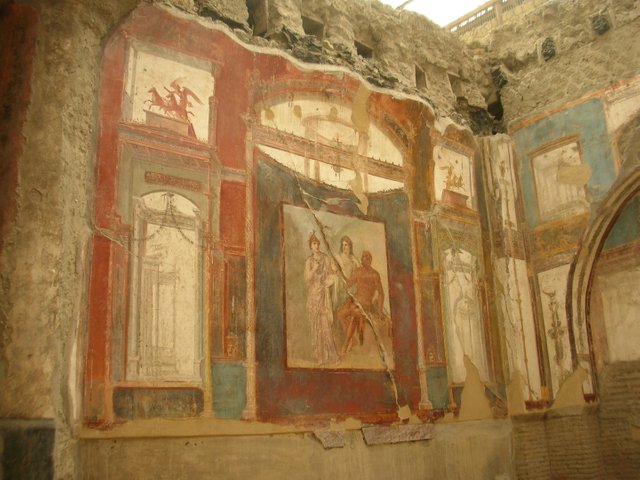
Representation of Minerva, Juno and Hercules inside the Collegium.
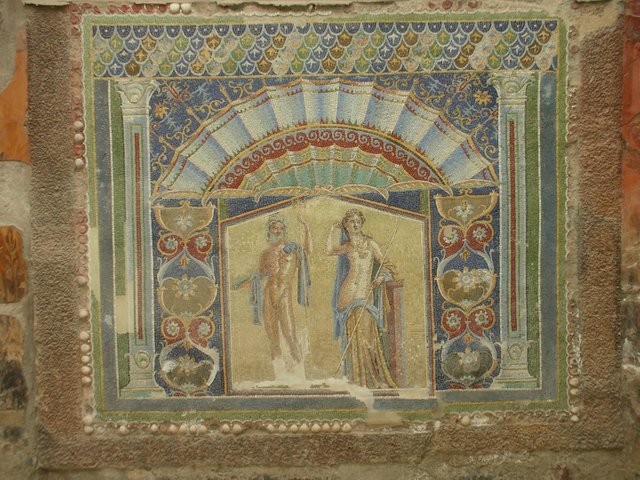
A mosaic, inside a well decorated house, picturing Neptunus and Amphitrite, the wife of Neptune.
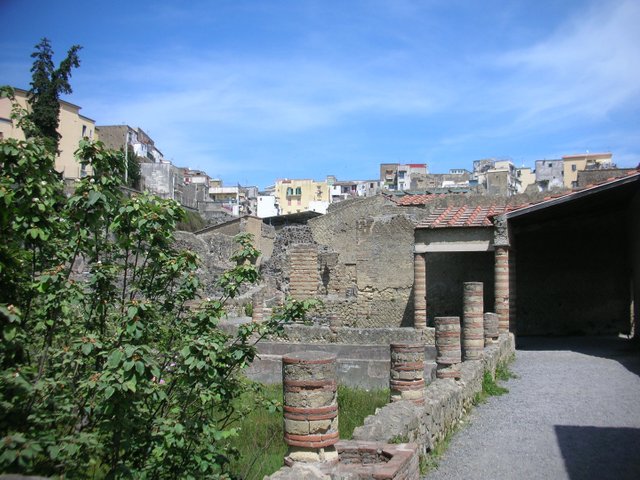
A gardenpart of a house, overlooking the current level of habitation.
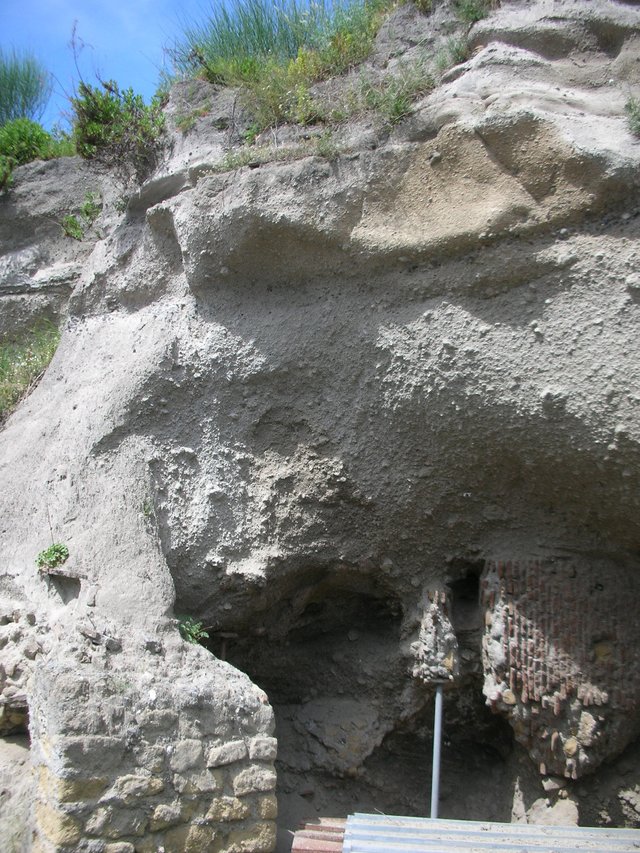
Clearly visible here the wall of debri left behind by the volcano still unexcavated, upon which the new town is build.
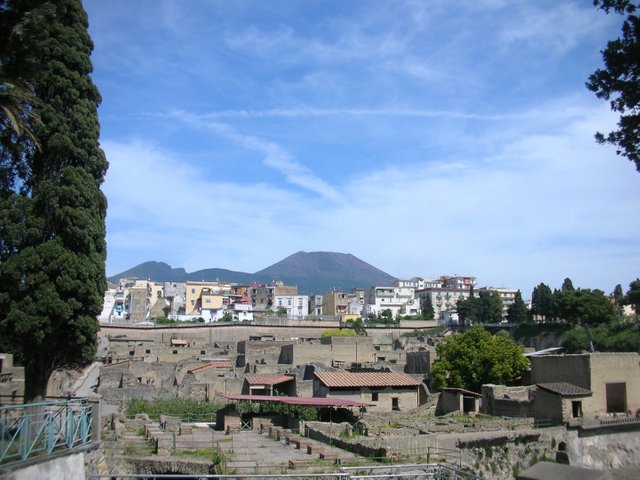
Lot smaller then Pompei, missing out on the large crowds, Erculano Scavi or Herculaneum.
And definetly wortwhile!
Thank you for sharing these great pictures of this old town. I went to Pompeii a few years ago and was impressed about the big cities, the pretty houses and their rich decorations. Life must have been vibrant back then like crazy.
Thank you for reading, taking it all with me, history, archeology, colouring my life today.
Would love to go to Toscany, Etruskes and Rome, some day, we all should if interested.
Ive always wanted to go to Pompeii and Herculaneum - there is a special Villa there of Plny that you can visit, apparently its superb. These pictures are wonderful - just imagine living in one of those houses overlooking this everday , ancient history at your doorstep-fantatic thanks for the share :)
Thanks Ladypenelope1,
this region is awesome, the ruins, the Amalfi coast, the food, try to go!
(The villa of Pliny, leaves me blank at the moment, so much to see.)